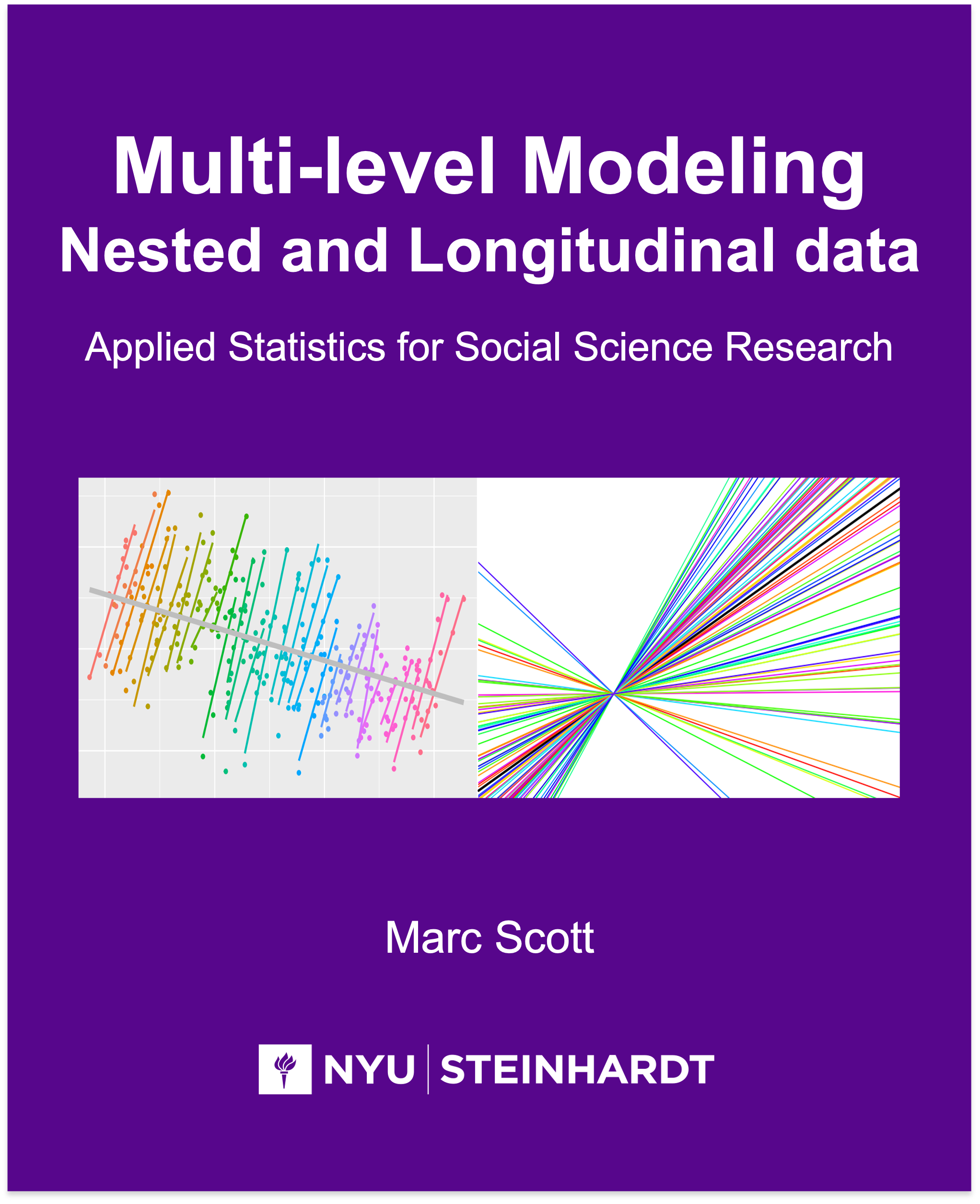Multi-level Modeling: Nested and Longitudinal data
Fall 2023
Preface
Course description
This is a course on models for multilevel nested data. These data arise in nested designs, which are quite common to education and applied social, behavioral and policy science. Traditional methods, such as OLS regression, are not appropriate in this setting, as they fail to model the complex correlational structure that is induced by these designs. Proper inference requires that we include aspects of the design in the model itself. Moreover, these more sophisticated techniques allow the researcher to learn new and important characteristics of the social and behavioral processes under study. In this module, we will develop and fit a set of models for nested designs (these are sometimes called hierarchical linear models). The course assignments will use state of the art statistical software to explore, fit and interpret the models.
Course Prerequisites:
- APSTA-GE 2003; APSTA-GE 2004 recommended
The book, and all its content, are Copyright © 2023 by New York University. All rights reserved.
If you have any questions related to the website, please contact developer.
Quiz links
| Quiz | |
|---|---|
| DEADLINE | Sun 9:15am |
| Week 1 | Activity 1 |
| Week 2 | Activity 2 |
| Week 3 | Activity 3 |
| Week 4 | Activity 4 |
| Week 5 | Activity 5 |
| Week 6 | Activity 6 |
Class links
| Slides | Recording | |
|---|---|---|
| Week 1 | Jamboard | Recording |
| Week 2 | Jamboard | Recording |
| Week 3 | Jamboard | Recording |
| Week 4 | Jamboard | Recording |
| Week 5 | Jamboard | Recording |
| Week 6 | Jamboard | Recording |
| Week 7 | Jamboard | Recording |
R programming Review
- The R computer language is a powerful and flexible tool used for statistical computing, data analysis, and making graphs. R’s large number of libraries give it a wide range of features that can help with different parts of data manipulation, visualization, and models.
R basic
R programming is a language designed for statistical research and working with data. It has an easy-to-understand syntax and is made to help with both simple and complicated statistical modeling. R has a huge collection of packages, which makes it a popular choice among students, analysts, and data scientists.
Functional programming
R supports functional programming methods, which let programmers come up with elegant ways to deal with difficult problems when manipulating data.
Tidyverse
The tidyverse is a set of R tools that make it easier to work with data and show it in different ways. The tidyverse packages, which include dplyr, tidyr, and ggplot2, all use the same syntax because they were built using the same design concepts. This makes it easier to work with and explore material in a way that is smooth and easy to understand.
ggplot
ggplot2 is a graphics library in the R ecosystem that is used by a lot of people. It lets users make complex and custom data visualizations. Based on the language of graphics, ggplot2 lets users build plots one layer at a time, giving them fine-grained control over the elements of visualization.
